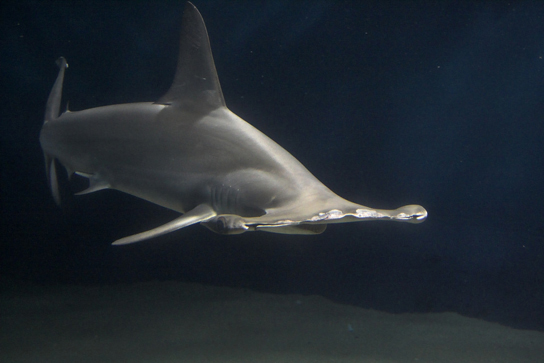| << Chapter < Page | Chapter >> Page > |
Lampreys possess a notochord as adults; however, this notochord is surrounded by a cartilaginous structure called an arcualia, which may resemble an evolutionarily early form of the vertebral column.
Gnathostomes or “jaw-mouths” are vertebrates that possess jaws. One of the most significant developments in early vertebrate evolution was the development of the jaw, which is a hinged structure attached to the cranium that allows an animal to grasp and tear its food. The evolution of jaws allowed early gnathostomes to exploit food resources that were unavailable to jawless fishes.
Early gnathostomes also possessed two sets of paired fins, allowing the fishes to maneuver accurately. Pectoral fins are typically located on the anterior body, and pelvic fins on the posterior. Evolution of the jaw and paired fins permitted gnathostomes to expand from the sedentary suspension feeding of jawless fishes to become mobile predators. The ability of gnathostomes to exploit new nutrient sources likely is one reason that they replaced most jawless fishes during the Devonian period. Two early groups of gnathostomes were the acanthodians and placoderms ( [link] ), which arose in the late Silurian period and are now extinct. Most modern fishes are gnathostomes that belong to the clades Chondrichthyes and Osteichthyes.

The clade Chondrichthyes is diverse, consisting of sharks ( [link] ), rays, and skates, together with sawfishes and a few dozen species of fishes called chimaeras , or “ghost” sharks.” Chondrichthyes are jawed fishes that possess paired fins and a skeleton made of cartilage. This clade arose approximately 370 million years ago in the early or middle Devonian. They are thought to be descended from the placoderms, which had skeletons made of bone; thus, the cartilaginous skeleton of Chondrichthyes is a later development. Parts of shark skeleton are strengthened by granules of calcium carbonate, but this is not the same as bone.
Most cartilaginous fishes live in marine habitats, with a few species living in fresh water for a part or all of their lives. Most sharks are carnivores that feed on live prey, either swallowing it whole or using their jaws and teeth to tear it into smaller pieces. Shark teeth likely evolved from the jagged scales that cover their skin, called placoid scales. Some species of sharks and rays are suspension feeders that feed on plankton.

Sharks have well-developed sense organs that aid them in locating prey, including a keen sense of smell and electroreception, with the latter perhaps the most sensitive of any animal. Organs called ampullae of Lorenzini allow sharks to detect the electromagnetic fields that are produced by all living things, including their prey. Electroreception has only been observed in aquatic or amphibious animals. Sharks, together with most fishes and aquatic and larval amphibians, also have a sense organ called the lateral line , which is used to detect movement and vibration in the surrounding water, and is often considered homologous to “hearing” in terrestrial vertebrates. The lateral line is visible as a darker stripe that runs along the length of a fish’s body.

Notification Switch
Would you like to follow the 'Biology' conversation and receive update notifications?